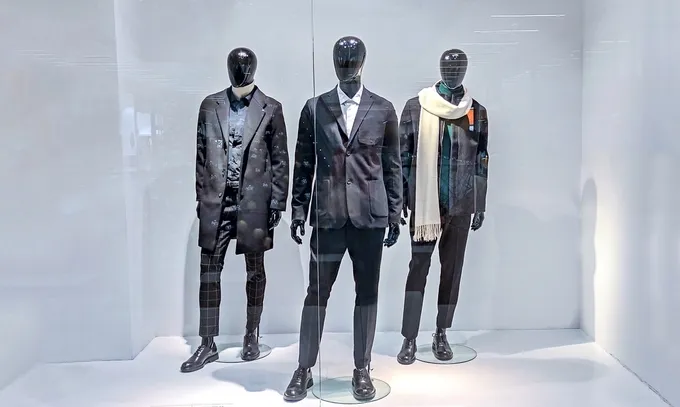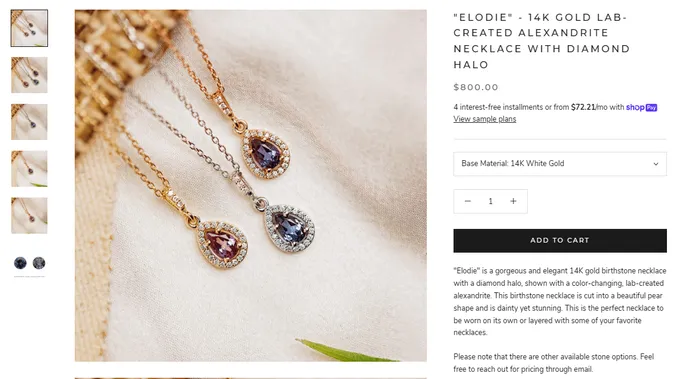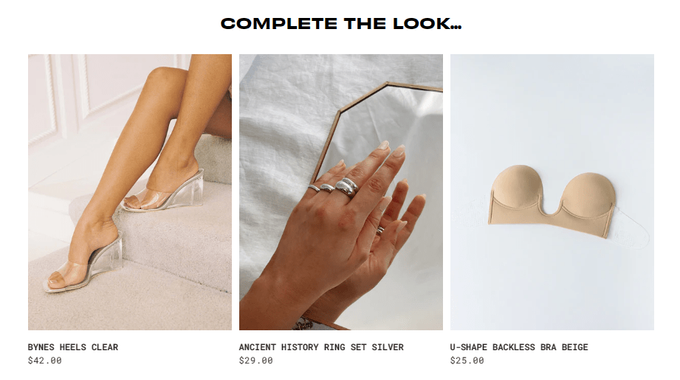eCommerce Visual Merchandising: How to Increase Conversions Using the Rule of Three
Don't underestimate the power of visual merchandising. Learn how merchandising display ideas like the rule of three can help increase conversions through impactful product presentation.
Updated January 14, 2025.

There are some things you can just count on. In visual merchandising and creative merchandising you can trust that the rule of three helps you make an impact. By displaying your products in groups of three, you can draw your customers' attention to key products and increase sales. Over 80% of customers agree that their buying decision is influenced by product displays. When you incorporate personalization into this strategy—tailoring the product trio to individual customer preferences—you not only enhance engagement but also significantly boost the likelihood of conversions. So, isn't it time to make sure your eCommerce merchandising is optimized to enhance the search experience for your customers?
» Check out these techniques to improve visual merchandising and increase eCommerce engagement
What Is the Rule of Three?
The meaning of the rule of three is an eCommerce visual merchandising principle in which three items are grouped together to create a more aesthetically pleasing and balanced composition. By using this technique, retailers can effectively enhance their visual displays and improve overall customer engagement.
A classic pattern of three example in visual merchandising display ideas is the mannequins in a clothing store window. Three mannequins are placed together and dressed in coordinating outfits. This creates a sense of unity and linkage amongst the products while also allowing each individual item to stand out and grab the customers' attention.
» Delve deeper into why product recommendations also need merchandising rules
Benefits of the Rule of Three in Visual Merchandising
Creates effortless comparisons: Grouping products in sets of three gives shoppers an easy way to compare similar items, simplifying their purchasing decisions and encouraging exploration of product options.
Showcases product variety: By strategically arranging products according to the rule of three in visual merchandising displays, stores can offer a quick glimpse of the wider selection available, even if every item isn’t displayed.
- Encourages creative merchandising display experimentation: The rule of three psychology invites creativity in visual merchandising, whether arranging mannequins side-by-side or stacking products in a pyramid shape, helping to capture attention and potentially increase sales through refreshed layouts.
- Enhances cross-selling and upselling: The Rule of Three allows retailers to place complementary (cross-sell) and premium (upsell) products alongside the primary item, boosting the chance of additional or more profitable sales.
» Discover the key differences between cross-selling and upselling and learn which strategy can maximize your eCommerce sales
How to Use the Rule of Three to Your Advantage
Product Listings
Improve your product listings by implementing the rule of three in your product images, especially when your products come in a variety of styles, sizes, and colors. With a single image, you can give customers a quick overview of your product range, allowing them to easily visualize their options at a glance and encouraging them to explore further. This simple technique, rooted in creative merchandising, not only enhances the shopping experience but can also lead to increased engagement with your listings.
Example: Staghead Designs showcases the variety of a particular jewelry design in one image (different metal and gemstone types). By placing the items asymmetrically in a pyramid or triangle, customers are encouraged to consider all three products because their eyes constantly move between the jewelry pieces, and their attention remains on this core merchandising display.
» Follow these eCommerce merchandising best practices
Product Recommendations
Promoting products in small groups not only allows customers to make quick and easy comparisons but also creates valuable opportunities for upselling and cross-selling. By grouping related products that complement each other—rather than just variations of the same item—you encourage customers to consider additional purchases that enhance their original choice. This strategy can increase both customer satisfaction and sales, as shoppers are exposed to more options that might meet their needs or elevate their experience.
Example: Princess Polly implements the rule of three in their product recommendations. If a customer is looking for a prom dress, Princess Polly suggests three of their other items that will complement the dress and "complete the look". This visual merchandising technique doesn't overwhelm the customer and encourages them to stay on the website.
» Stay ahead of the competition and ensure your visual merchandising display ideas is top-notch
Additional Tips for Using the Rule of Three
Select related items: Choose three items that are closely related, even if they aren’t identical, to create a cohesive and appealing display.
Experiment with arrangements: Test different positions and arrangements, such as placing mannequins side-by-side instead of back-to-back, to see what catches shoppers’ attention.
Track sales impact: After setting up a new display, monitor sales to see if grouping products in threes has a positive effect. If successful, consider applying this strategy throughout the store.
Use lighting strategically: Highlight triplet displays with focused lighting to make them stand out and draw customers' attention.
» Improve the quality of your personalized product recommendations with Fast Simon's Smart Collections
The Best Things Come in Threes
The rule of three is an impactful strategy for elevating your visual merchandising plan and enhancing the overall shopping experience. By using this technique, you can improve customer engagement, make product displays more appealing, and encourage quicker purchasing decisions. Integrating the rule of three into your automated visual merchandising techniques allows you to optimize product presentation seamlessly, showcasing items in a way that captures interest and highlights variety. This approach not only supports your brand and marketing goals but also strategically drives your ultimate objective: boosting sales and building customer loyalty through creative merchandising.
» Ready to get started? Book a demo to learn more about our eCommerce merchandising tool








